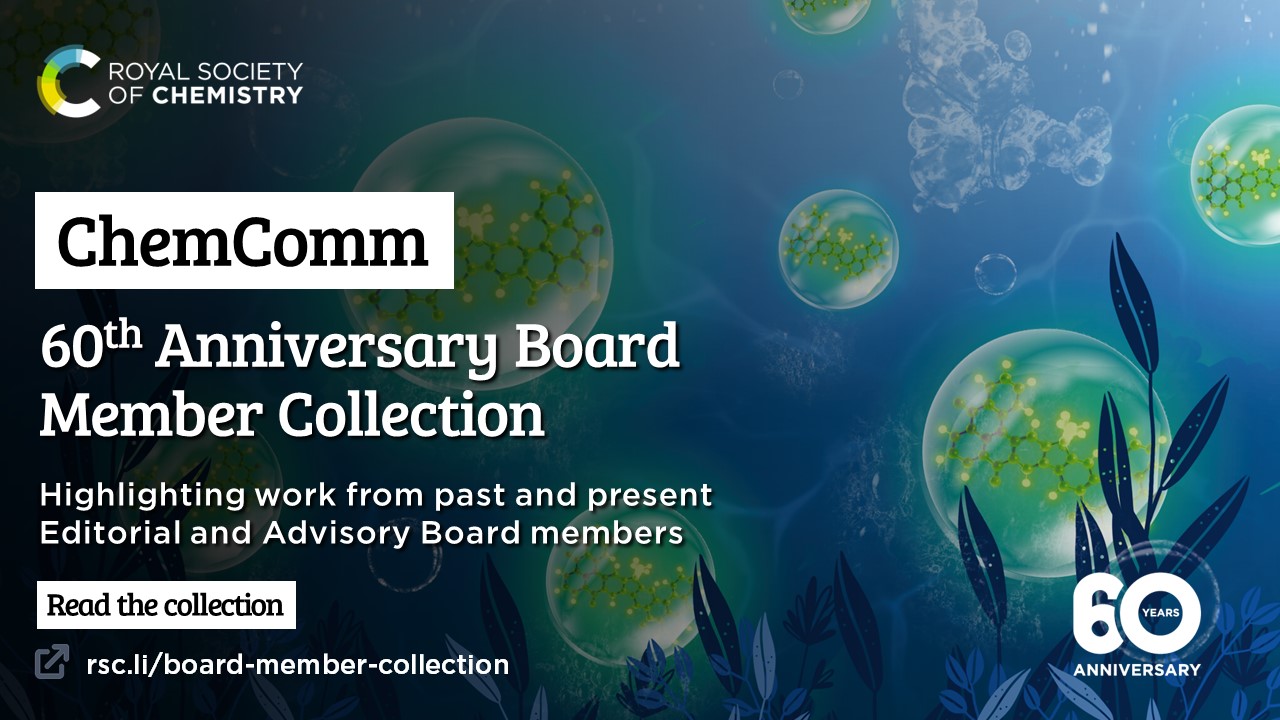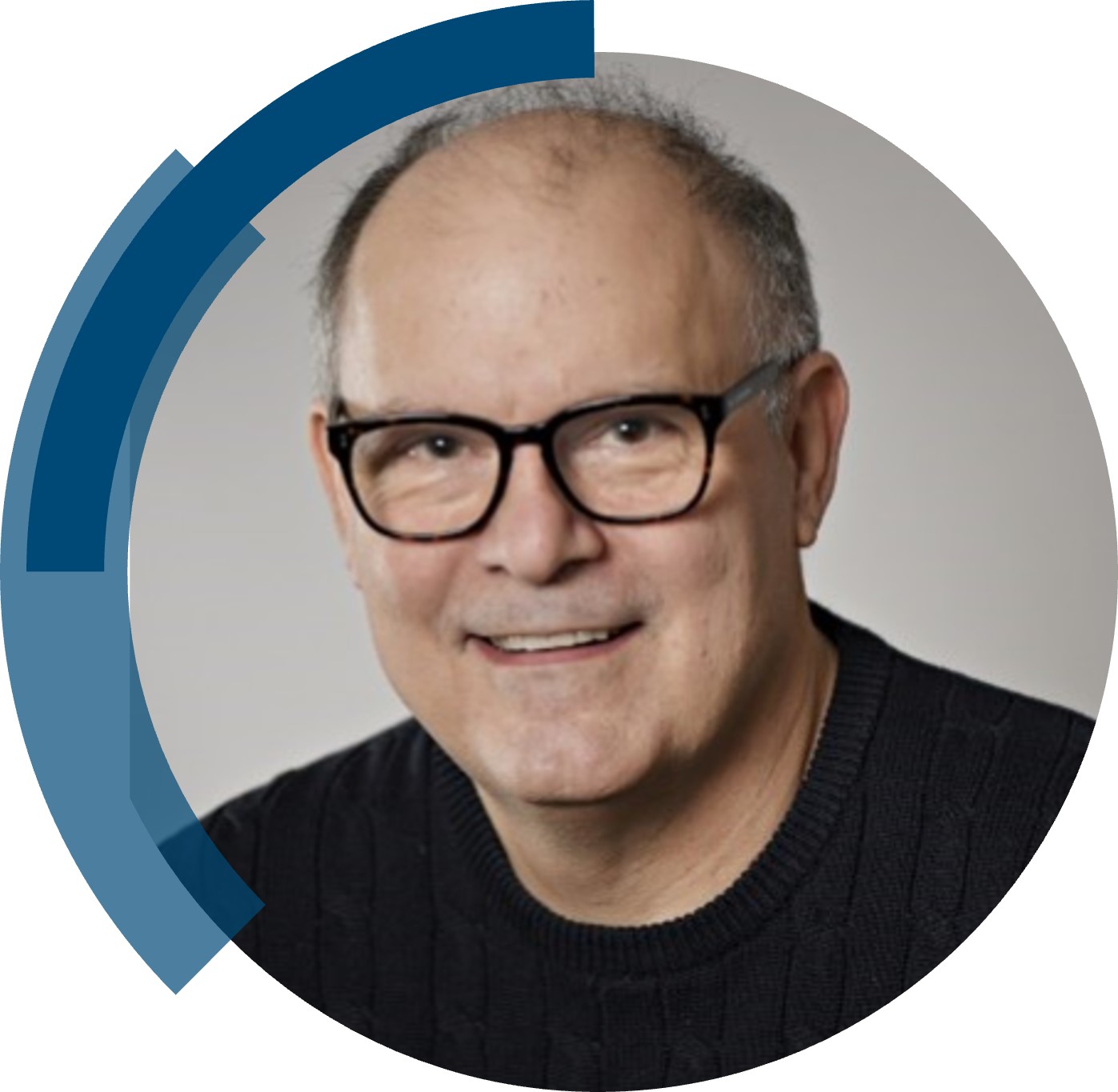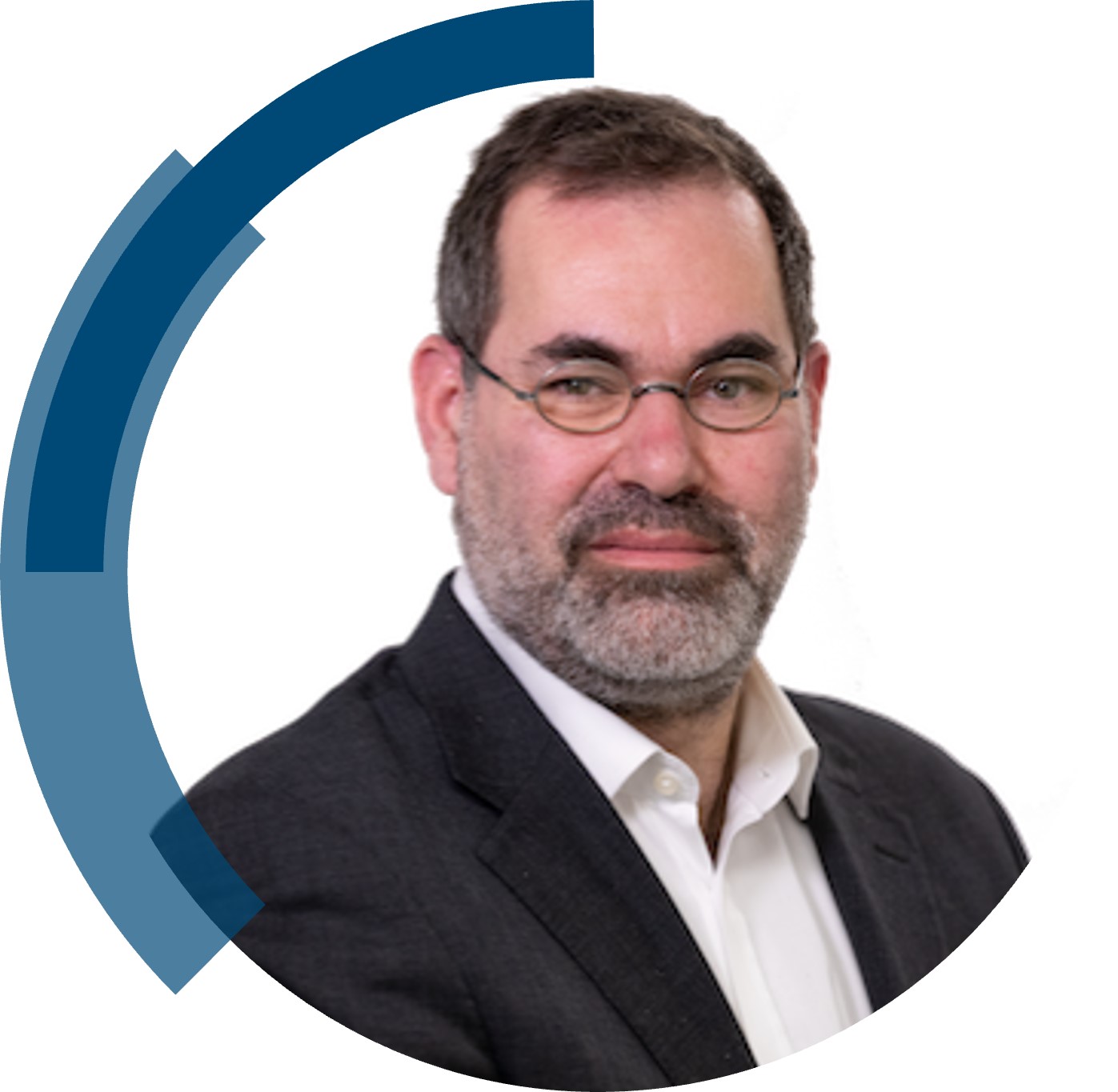Chemical Communications will be publishing its 60th volume in 2024. Over the past 60 years, ChemComm has been the RSC’s most cited journal, and one of the most trusted venues for rapid publication of short communications. In our anniversary year, we recognise the important contributions ChemComm has made, and continues to make, in advancing the chemical sciences.
As part of these celebrations, we’ve brought together a special collection highlighting the latest work from the pioneering researchers who have supported the journal in reaching this milestone by serving on ChemComm’s Editorial and Advisory boards in the last two decades. Throughout the year, we’ll be catching up with these current and former Board Members to discuss their work and reflect on ChemComm’s 60th anniversary. Check out our first interviews with current Editorial Board chair, Professor Doug Stephan, and Advisory Board member, Professor Eli Zysman-Colman, below!
What attracted you to the role as Editorial Board Chair for ChemComm?
There are a number of positives that drew me to this role. Firstly, the journal has a solid reputation for publishing quality communications. The associate editors and board members are great scientists whom I admire, and all of the RSC staff are a pleasure to work with.
How have you seen ChemComm evolve over the years, and what aspects do you find most noteworthy?
I think that ChemComm, like the discipline has evolved in sophistication and rigor. Years ago, communications were very short reports of new concepts that were worthy of further study, and they were typically followed up with a fuller report. Today, communications go so much further, substantiating claims and providing much more credible proofs of principle. So much so that they most often stand on their own merit.
What is your favourite thing about ChemComm?
I guess the thing I like the most is that as one scans the table of contents of an issue, one can find a very broad range of chemistry. Inorganic organic, materials, polymers, theoretical and physical chemistry are all covered. Thus, even if I do not read all the papers, I feel I am at least aware of important developments outside of my particular area.
In what ways do you think ChemComm stands out among other journals in your field?
As other journals take communications, full papers and numerous reviews, ChemComm stands out as the journal that focuses on communications. These short but impactful papers cover areas across the discipline of Chemistry and beyond.
Are there ways in which the journal can further support and engage with future generations of scientists?
I think that young (and old) scientists want to engage with quality, quality papers, quality reviewing and quality editors. The sustained focus of ChemComm on these aspects augurs well for continuing engagement of the community through the generations.
I also believe that ChemComm’s efforts to continue to increase their presence and use of social media is critically important. This is a terrific tool for the rapid dissemination of information allowing scientist to ensure that their community is aware of their work.
Could you provide a brief summary of your recent ChemComm publication?
Our recent ChemComm describes a unique synthetic route to phosphorus analogues of β-lactams, exploiting FLP-type reactions.
In your opinion, what are the next steps or potential areas of research that could build upon the findings in this paper?
These compounds have potential to act as antimicrobial agents. We are developing collaborations to evaluate these species and related derivatives.
Read Doug’s full Communication here: Stannyl phosphaketene as a synthon for phosphorus analogues of β-lactams by Yong-an Luo, Zhao Zhao, Ting Chen, Yanguo Li, Yufen Zhao, Douglas Stephan and Yile Wu
What is your favourite thing about ChemComm?
I enjoy the breadth of chemistry covered in Chem. Commun.
Could you provide a brief summary of your recent ChemComm publication?
Our paper demonstrates a new multiresonant thermally activated delayed fluorescence (MR-TADF) emitter design, DDiKTa-F wherein we annelate on either side of a fluorene a known MR-TADF moiety that we had previous studied, DiKTa. In doing so, we produced a narrower, brighter and red-shifted emission compared to a previous emitter we had developed, DDiKTa. We then demonstrated its utility as the emitter in an organic-light emitting diode.
Read Eli’s Open Access Communcation article here: A fluorene-bridged double carbonyl/amine multiresonant thermally activated delayed fluorescence emitter for efficient green OLEDs by Sen Wu, Ya-Nan Hu, Dianming Sun, Kai Wang, Xiao-Hong Zhang and Eli Zysman-Colman














